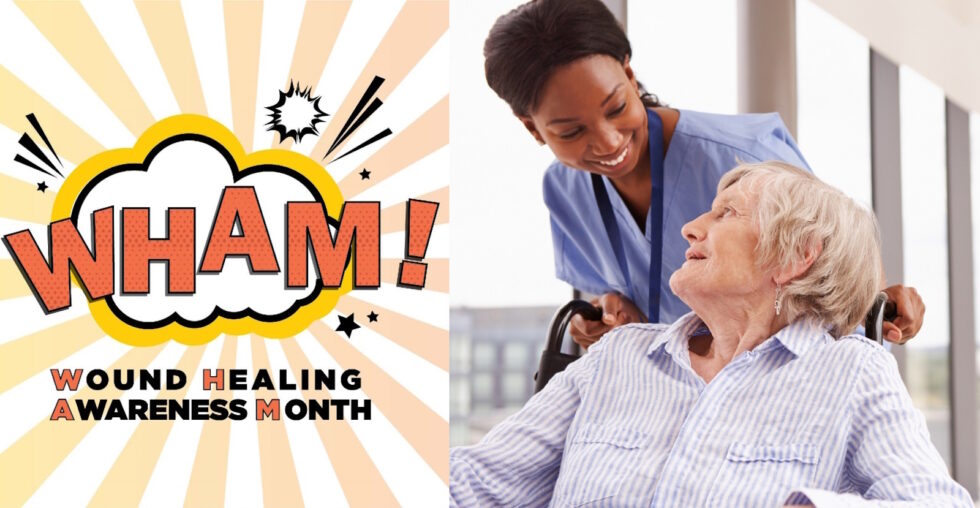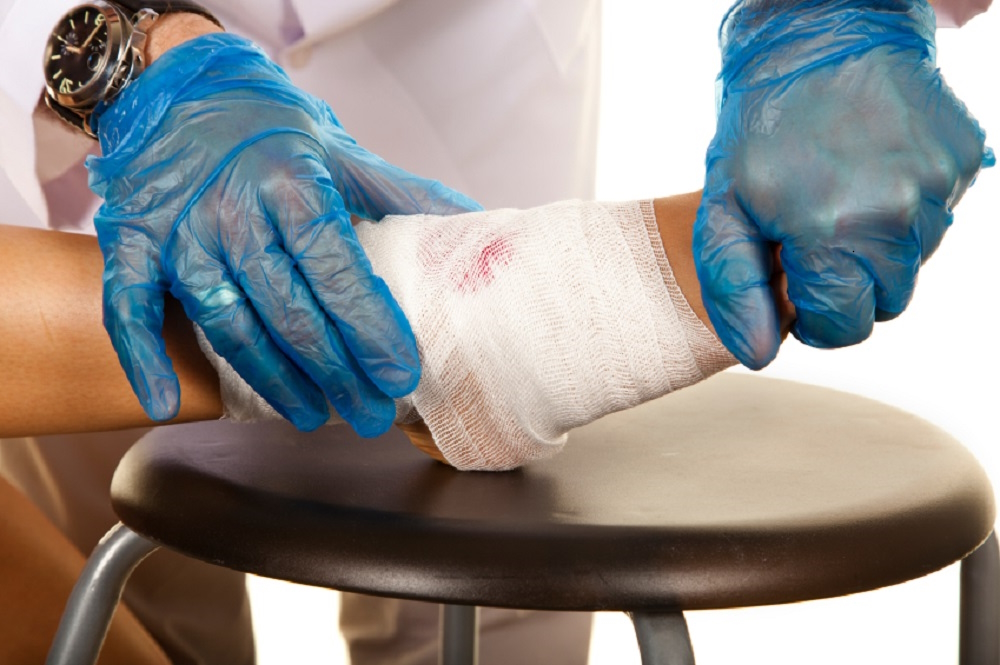Need Chronic Wound Care? How Vascular and Wound Care Specialists Work Together
Author: StrideCare Internal Team

Patients with chronic ulcers and sores on their feet, ankles, and lower legs are typically advised to visit a wound care specialist. This makes sense since these professionals can devise a treatment plan that improves wound healing outcomes. However, what about the underlying cause? There are many reasons why a chronic wound exists, including trauma, complications from diabetes or surgery, and prolonged immobility. Meanwhile arterial and venous diseases can also be the culprit. By not addressing those vascular issues, effective wound care can become more challenging. While wound care specialists are a great place to start because of the treatment they provide, a team approach with a vascular specialist can be extremely beneficial.
Our team of experts at Stridecare strongly believes in the ongoing collaborative effort between what we do and our colleagues in the wound care space. As a result, we are helping raise awareness of this multidisciplinary approach during June’s Wound Healing Awareness Month. By teaming up, we identify and treat serious conditions faster, improve blood flow for optimal healing, eliminate painful symptoms, and decrease the chance of life-altering limb loss.
Why Wound Care Is So Important
It’s bad enough to have an open wound on your legs or feet. But when it doesn’t heal, no matter what remedies you try or how many trips to the doctor you make, the experience goes from painful to life-altering. Wound Healing Awareness Month—now in its eighth year—is celebrated each June to raise awareness for wound healing and recognize the challenges experienced by individuals whose lives are affected daily by chronic wounds. Chronic wounds affect 6.5 million patients annually and are currently one of the biggest burdens and challenges to the healthcare system, the wound care professionals who treat them, and the patients who suffer from them.

What is a chronic wound exactly?
Chronic wounds are painful, open sores on a person’s legs or feet that won’t heal. To be considered non-healing, the ulcer generally does not show improvement within four weeks to three months. They also tend to ooze and bleed and present a heightened risk of infection as they continue to resist traditional treatment. A chronic wound has a variety of symptoms. Below are just a few of the more common telltale signs.
- Drainage (bloody or pus-filled)
- Skin discoloration
- Rash and/or swelling on the legs
- Thickening or itchy skin
- Skin is cool or cold to the touch
- Scabbing or flaking skin
- Hair loss near the ulcer
- Varicose veins
As a result, a team approach helps manage wound care issues more successfully.
What Is the Wound Care Specialist’s Role?
If your wound isn’t healing quickly enough or displays many of the symptoms above, it is never too early to visit a wound care professional for specialized treatment. Certified wound care professionals provide advanced solutions beyond the typical Band-Aid to treat and prevent acute and chronic wounds, guard against infection, and ongoing complex wound monitoring and management.
Depending on the severity of the wound and the patient’s unique needs, a wound care specialist might employ the following treatment options to ensure optimal healing:
- Medication changes
- Regular cleanings for proper hygiene
- Tailored wound dressings
- Biological skin substitutions
- Debridements
- Oxygen therapy
- Use of compression stockings and bandages
Caring for chronic wounds that will not heal can be challenging, especially if your wound is due to an underlying vascular issue. This is why the relationship between wound care specialists and vascular doctors is so important.

How Can a Vascular Specialist Help With My Wound Care?
Non-healing ulcers and sores are frequently caused by vascular conditions, meaning that your body isn’t circulating blood the way it should. Wounds need oxygen to heal and promote healthy tissue regeneration. The best way to distribute oxygen to help with this is adequate blood delivery throughout the body. When you have circulatory issues, either because of damaged veins or clogged arteries, your blood can’t transport cells to the injury. As a result, healing is prolonged or prevented.
There are two non-healing ulcers we see the most with circulatory issues: venous ulcers and arterial ulcers.
Venous ulcers
More than 200,000 people are affected by venous ulcers in the U.S. each year. Damaged valves in the veins cause these shallow, open sores on the legs and feet. They may begin as an area of redness on the skin. But because of a lack of critical blood flow, blood begins to pool in the legs, and skin tissue eventually breaks down to form a wound. Infection and inflammation typically set in from there, leading to scabbing and flaking skin, itchy skin, skin discoloration, and leg pain that worsens when you stand.

Arterial ulcers
Like venous ulcers, ischemic skin ulcers are non-healing ulcers. But they differ slightly because the main culprit is blocked or clogged arteries. You can typically tell the difference in that arterial ulcers form on the outer side of the angles, feet, heels, and toes. In contrast, venous ulcers are typically found on the inner side of the ankles and below the knees. Arterial ulcers are also deeper wounds than the shallowness of venous ulcers and can be characterized by a red, yellow, or black “punched-out” appearance.
Stridecare Wants to Work With You and Your Wound Care Specialist Today!
The doctors at Stridecare believe that the best care for chronic wounds that won’t heal through traditional methods is a team approach between vascular and wound care specialists. Many patients with complex wounds require the off-loading and wound care that a well-trained wound specialist can provide. The vascular specialists at Stridecare provide the evaluation and treatment to allow optimal blood flow for wound healing.
Stridecare, established in 2012, became the first independent vascular and interventional radiology practice in North Texas. It has since experienced significant growth, expanding its specialty team to include vascular surgeons and vein specialists. The dedicated team of professionals at Stridecare are at the forefront of medical innovation and are dedicated to helping patients avoid the traditionally long and invasive surgeries that were previously utilized to treat vascular disease.
Using state-of-the-art and minimally invasive procedures that feature small incisions, less pain, and a shorter recovery period, Stridecare can treat a broad range of vascular conditions in an in-office or outpatient setting. Patients who are experiencing venous insufficiency, varicose veins, spider veins, diabetic vascular disease, venous ulcers, peripheral artery disease, leg discoloration, lymphedema, restless legs syndrome, and other vascular conditions can take advantage of these safe and effective minimally invasive treatments.
Stridecare’s specialists are committed to delivering outstanding and safe care with compassion and concern for all their patients.
Prior to starting any new treatment or questions regarding a medical condition, always seek the advice of your doctor or other qualified health provider. This information is not a substitute for professional medical advice.
StrideCare serves the South Texas area including Houston, San Antonio, Austin, Round Rock, Bastrop, Brushy Creek, Cedar Park, Converse, Georgetown, Hutto, Kyle, Leander, Marble Falls, New Braunfels, Pasadena, Pearland, Pflugerville, San Marcos, Schertz, Houston, Sugar Land, Katy, Webster, Bay City, Clear Lake, Lake Jackson, The Woodlands, Universal City, Spring, Kingwood, Stafford, Conroe, Texas City, Cypress, League City, Bellaire, and more.


